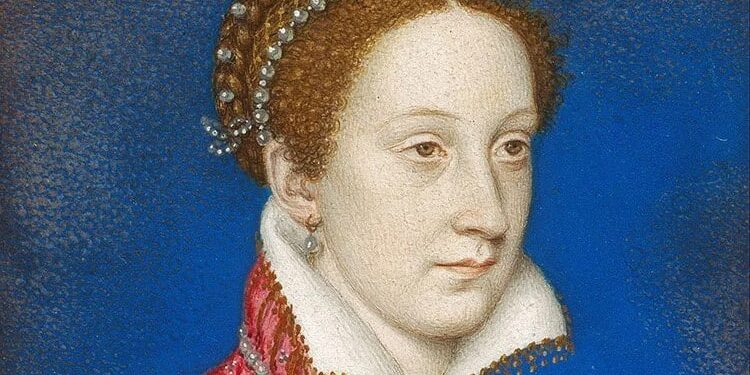Mary Stewart (also known as Mary Stuart or Mary I of Scotland) was one of the most fascinating and tragic figures in British history. Born in 1542 at Linlithgow Palace, she became Queen of Scotland when she was just six days old following the death of her father, James V.
Her early life was marked by political turbulence. To protect her from English threats, she was sent to France at age five, where she was raised in the French court and later married the Dauphin Francis in 1558. Their union made her briefly the Queen consort of France when Francis became king in 1559, but his death in 1560 left her a widow at just 18.
Upon returning to Scotland in 1561, Mary found herself in a changed country. The Protestant Reformation had taken hold during her absence, and as a Catholic monarch, she faced immediate challenges. Though she initially attempted to strike a balance between Catholic and Protestant interests, religious tensions remained high throughout her reign.
Her personal life continued to generate controversy. In 1565, she married her cousin Henry Stuart, Lord Darnley, a match that proved disastrous. Darnley was allegedly murdered in 1567, and Mary’s subsequent marriage to the Earl of Bothwell, who was widely suspected of Darnley’s murder, led to an uprising against her. Forced to abdicate in favor of her infant son James VI, Mary fled to England seeking protection from her cousin, Queen Elizabeth I.
Elizabeth’s response would seal Mary’s fate. Rather than providing the sanctuary Mary sought, Elizabeth had her imprisoned. For the next 19 years, Mary remained in custody in various English castles and manor houses. She became the focus of numerous Catholic plots to depose Elizabeth, leading to her being viewed as a serious threat to English security.
In 1586, Mary was implicated in the Babington Plot, a conspiracy to assassinate Elizabeth and place Mary on the English throne. Though she denied involvement, she was found guilty of treason and sentenced to death. Her execution at Fotheringhay Castle on February 8, 1587, was a watershed moment in British history.
Ironically, Mary’s son James would later inherit the English throne upon Elizabeth’s death in 1603, uniting the Scottish and English crowns just as Mary had once hoped to do. Her life, marked by political intrigue, religious conflict, and personal tragedy, continues to captivate historians and the public imagination, making her one of history’s most memorable monarchs.
newshub



Recent Comments